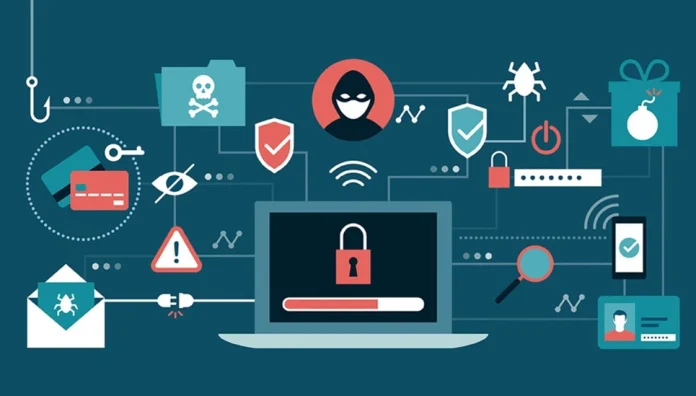cyber security threats are evolving faster than ever before. As we move deeper into 2025, individuals, businesses, and governments are facing increasingly sophisticated cyberattacks that go far beyond traditional hacking methods. From AI-driven phishing scams to state-sponsored cyber espionage, the digital battleground is constantly shifting.
In this blog post, we’ll explore the top cyber security threats of 2025 and offer practical steps you can take to protect your data, identity, and infrastructure in a high-risk digital environment.
Top Cyber Security Threats in 2025
1. AI-Powered Phishing Attacks
Phishing isn’t new, but in 2025, it’s more dangerous than ever. Cybercriminals are now using artificial intelligence to craft highly convincing phishing emails, messages, and even phone calls. These AI-generated scams are tailored to each victim, making them much harder to detect.
2. Ransomware as a Service (RaaS)
Ransomware attacks have become easier for criminals to launch thanks to the rise of RaaS platforms. These subscription-based services offer ready-made malware tools to anyone willing to pay, increasing the number of attacks on businesses, hospitals, and even schools.
3. Supply Chain Attacks
In 2025, attackers are increasingly targeting the software supply chain. By infiltrating trusted third-party vendors, they can spread malicious code to thousands of organizations in a single stroke—just like the infamous SolarWinds attack in 2020.
4. Deepfake and Synthetic Identity Fraud
The line between real and fake continues to blur. Deepfake technology is now being used to impersonate executives, manipulate video meetings, and commit identity fraud. This poses serious risks to corporate communication and digital trust.
5. IoT Device Vulnerabilities
With billions of smart devices connected to the internet, IoT security is a growing concern. Hackers can exploit weak or outdated security in smart home gadgets, medical devices, or industrial sensors to gain unauthorized access to networks.
How to Stay Protected in 2025
Staying safe in the digital world requires a proactive and multi-layered approach. Here’s how you can defend yourself against modern cyber threats:
1. Enable Multi-Factor Authentication (MFA)
Using MFA adds an extra layer of protection to your accounts. Even if your password is stolen, an attacker can’t access your data without the second verification step.
2. Invest in Advanced Cyber Security Tools
Next-gen antivirus software, firewalls, and endpoint protection platforms (EPP) use machine learning to detect and block threats in real-time. Invest in reliable tools for both personal and professional use.
3. Keep Software and Systems Updated
Many cyber attacks exploit known vulnerabilities. Regular updates and patch management are critical to closing security loopholes before hackers can use them.
4. Educate Your Team or Family
Human error remains a top cause of breaches. Conduct regular cyber security awareness training to help users recognize phishing scams, suspicious links, and unsafe behavior online.
5. Use a Zero Trust Security Model
The traditional “trust but verify” approach is outdated. Zero Trust Architecture assumes that no user or device is safe by default, minimizing the risk of internal and external threats.
The Future of Cyber Security
As technology advances, so will the threats. In 2025 and beyond, cyber security will need to be adaptive, intelligent, and collaborative. Businesses must prioritize investment in AI-based defense systems, while governments must enhance international cooperation to combat cybercrime.
At the same time, individuals have a responsibility to stay informed, use secure practices, and protect their digital lives.
The cyber security threats of 2025 are unlike anything we’ve seen before. But with the right strategies, tools, and mindset, we can stay one step ahead. Whether you’re an individual user or managing a global enterprise, now is the time to take cyber protection seriously.



